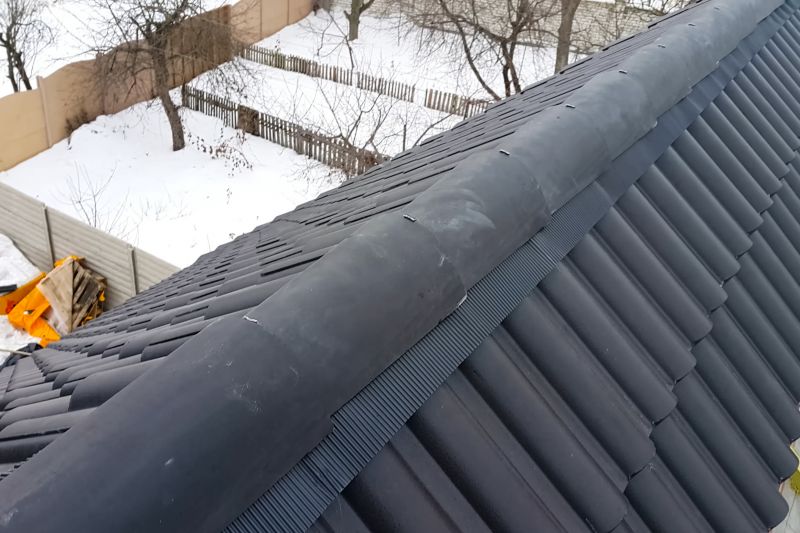Top-Rated Products For Seamless Roof Replacement Projects
Select from highly recommended roofing materials and accessories that support efficient and quality roof upgrades.
 Replacing a roof is a significant project that involves selecting the right products to ensure durability, weather resistance, and longevity. The process typically begins with assessing the existing roof structure and determining the most suitable materials based on the building’s architecture, local climate, and budget considerations. Various products are available to meet different needs, ranging from traditional shingles to advanced membrane systems. Proper installation and quality materials are essential to achieve a reliable and long-lasting roof replacement.
Replacing a roof is a significant project that involves selecting the right products to ensure durability, weather resistance, and longevity. The process typically begins with assessing the existing roof structure and determining the most suitable materials based on the building’s architecture, local climate, and budget considerations. Various products are available to meet different needs, ranging from traditional shingles to advanced membrane systems. Proper installation and quality materials are essential to achieve a reliable and long-lasting roof replacement.
Top Overall Option
High-Quality Roofing Membrane
A versatile roofing membrane offers excellent waterproofing and durability, suitable for various roof types. It provides a seamless barrier against the elements and can be used in both residential and commercial projects. Its ease of installation and long-lasting performance make it a reliable choice for roof replacements.
Types of Products For Roof Replacements
Asphalt Shingles
Popular for their affordability and ease of installation, asphalt shingles come in a variety of styles and colors to suit different aesthetic preferences.
Metal Roofing Panels
Known for their longevity and resistance to harsh weather, metal panels are a durable option that can be customized for residential or commercial roofs.
Clay and Concrete Tiles
These tiles offer a distinctive appearance and excellent durability, often used in Mediterranean or traditional architectural styles.
Wood Shingles and Shakes
Wood products provide a natural aesthetic and are suitable for certain architectural styles, requiring regular maintenance.
Rubber Roofing Membranes
Flexible and waterproof, rubber membranes are ideal for flat or low-slope roofs, offering ease of installation and repair.
Built-Up Roofing (BUR) Systems
Consisting of multiple layers of bitumen and reinforcing fabrics, BUR systems are often used for commercial flat roofs, providing robust protection.
Modified Bitumen Roofing
A versatile membrane that combines asphalt with modifiers for enhanced performance, suitable for low-slope roofs.
Synthetic Roofing Materials
Made from durable polymers, synthetic options mimic traditional materials like slate or wood but with less maintenance.
Standing Seam Metal Panels
A sleek, modern metal roofing option with concealed fasteners, offering high durability and weather resistance.
Slate Roofing
Natural slate provides an elegant appearance and excellent longevity, often used in upscale architectural designs.
Polymer and PVC Roofing Sheets
Lightweight and resistant to chemicals and weather, these sheets are suitable for various roofing applications.
Insulation Boards
Used in conjunction with roofing materials to enhance thermal efficiency and energy savings.
Popular Choices
Widely used for their affordability and variety, asphalt shingles are a common choice in residential roofing projects.
Favored for their durability and modern appearance, metal panels are trending in both residential and commercial settings.
Known for their distinctive look and longevity, these tiles are popular in certain architectural styles.
Increasingly chosen for flat roofs, rubber membranes offer flexibility and waterproofing capabilities.
Emerging in popularity, synthetic options provide a low-maintenance alternative to traditional materials.
A sleek, contemporary option trending for its high performance and aesthetic appeal.
A premium material often sought after for its natural beauty and durability.
Chosen for their natural look, especially in rustic or traditional home designs.
Common in commercial applications, these systems are valued for their robustness.
A favored choice for low-slope roofs due to its versatility and performance.
When choosing products for roof replacement, homeowners and contractors often consider factors such as material lifespan, resistance to elements, ease of installation, and maintenance requirements. It is important to select products that align with the specific demands of the location, such as high wind areas or regions with heavy rainfall. Additionally, compatibility with existing roofing components and the overall aesthetic appeal can influence the decision-making process.
The right products can significantly impact the performance and appearance of a new roof. While some products are designed for quick installation and cost-effectiveness, others prioritize durability and long-term protection. Consulting with roofing professionals and reviewing product specifications can help ensure the selected materials meet the project’s goals. Ultimately, investing in quality products can provide peace of mind and a sturdy roof that protects the structure for many years.
This guide aims to highlight a variety of products suitable for roof replacements, offering options across different categories and price points. By understanding the features and benefits of each type, homeowners can make informed choices tailored to their specific needs and preferences.
Key Buying Considerations
- Assess the climate and weather conditions of your location to choose appropriate materials.
- Determine the roof slope and structure to ensure compatibility with selected products.
- Consider the longevity and maintenance requirements of different roofing materials.
- Evaluate the installation process and whether professional help is necessary.
- Review the warranty and manufacturer support for potential products.
- Match the roofing material's aesthetic with the architectural style of the building.
- Factor in your budget and the overall cost of materials and installation.
- Check local building codes and regulations regarding roofing materials.
- Consider energy efficiency features if applicable, such as reflective surfaces.
- Look into the weight of materials to ensure the existing structure can support it.
- Identify products that provide adequate waterproofing and weather resistance.
- Think about the ease of repair and replacement in the future.
- Research the environmental durability, such as resistance to UV rays or corrosion.
- Ensure compatibility with existing roofing components, such as flashing and underlayment.
This content contains affiliate links. We may earn a commission if you make a purchase through these links, at no additional cost to you.
